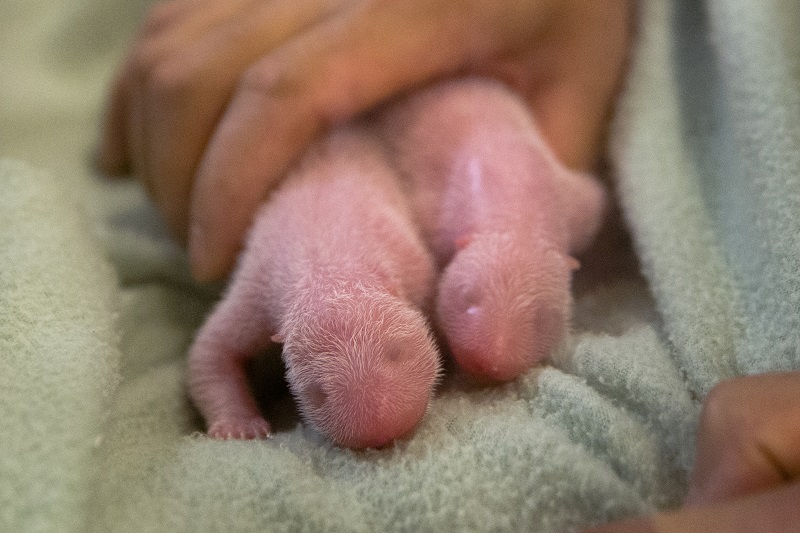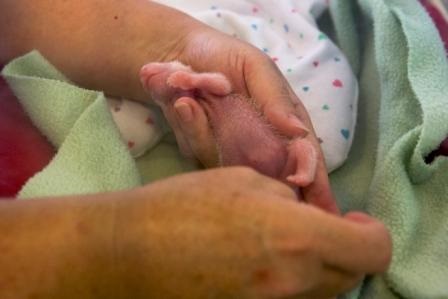Zoo Atlanta's Newborn Panda Twins Are Brothers

It's another two boys for Lun Lun and Yang Yang. The twin giant panda cubs born at Zoo Atlanta this week are both male, zoo officials announced today (July 18).
The birth of the brothers on Monday (July 15) was a rare occasion; the last time giant panda twins were born in the United States was 1987. The newborns' parents, Lun Lun and Yang Yang, have three other male offspring, including Po, born in 2010.
Oftentimes when panda twins are born in the wild, only one survives. But keepers at Zoo Atlanta are stepping in to help Lun Lun with care-taking duties, rotating the cubs between their mother's den and a nursery for the first few months. So far, the twin brothers "appear to be healthy and are doing well with their new regimen," zoo officials said.
"Lun Lun is a protective mother, posing occasional challenges for staff as they attempt to rotate the cubs on a regular schedule," Zoo Atlanta officials added. "The Animal Management and Veterinary Teams will continue to base their strategy for the cubs' care on Lun Lun's behavior and the twins' health."
All pandas in the United States technically belong to China, which loans the fuzzy creatures to foreign zoos. In keeping with a Chinese baby-naming tradition, the bear cubs are not named until they are 100 days old.
There are thought to be only 1,600 giant pandas left in the wild and their natural habitat is restricted to mountainous forests of China. Captive breeding is one way to study and conserve the endangered species.
You might be able to catch Lun Lun caring for her cubs on Zoo Atlanta's PandaCam: http://www.zooatlanta.org/1212/panda_cam
Get the world’s most fascinating discoveries delivered straight to your inbox.
Follow Megan Gannon on Twitter and Google+. Follow us @livescience, Facebook & Google+. Original article on LiveScience.com.


